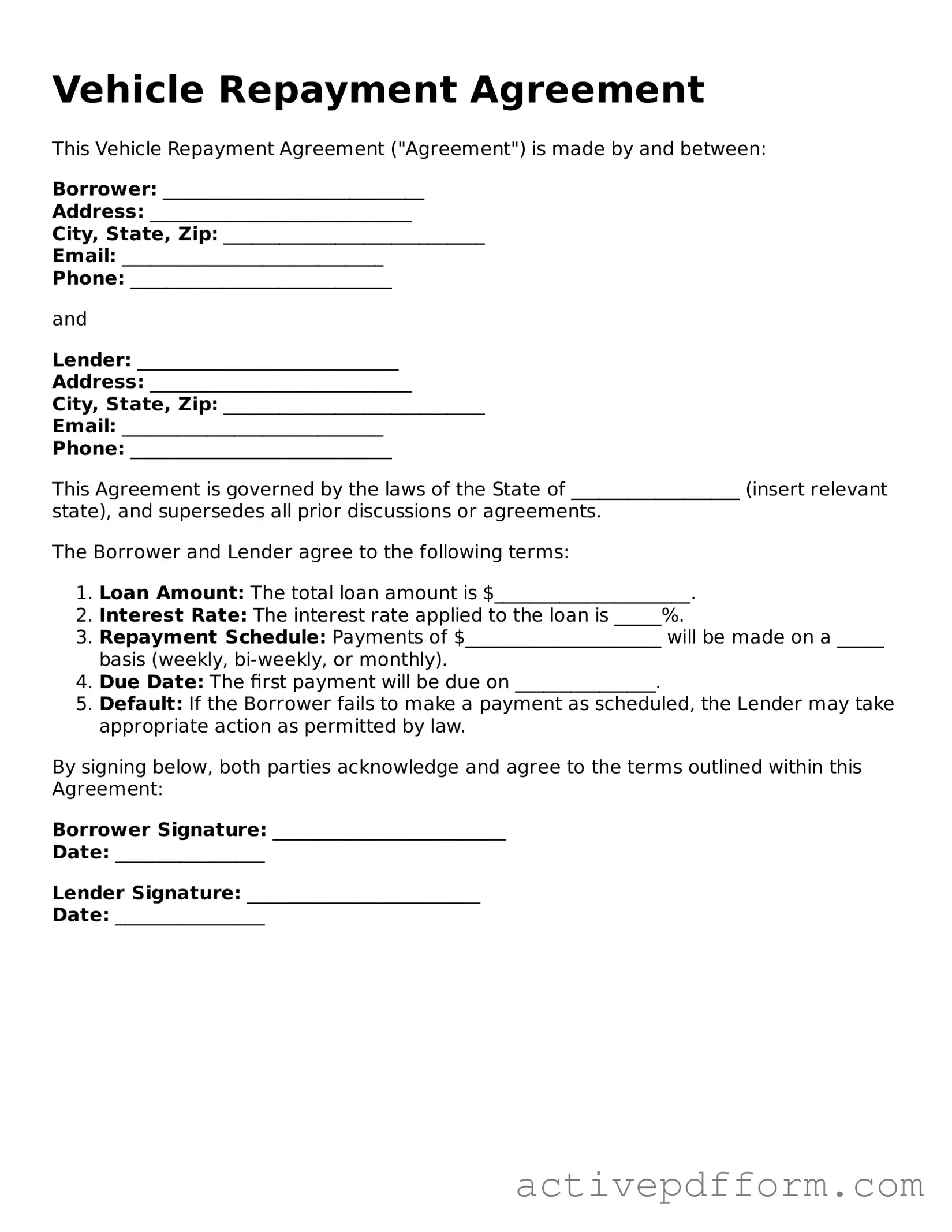What is a Vehicle Repayment Agreement form?
The Vehicle Repayment Agreement form is a document that outlines the terms and conditions under which a borrower agrees to repay a loan for a vehicle. It includes details such as payment amounts, due dates, and any applicable interest rates.
Who needs to complete the Vehicle Repayment Agreement form?
This form is typically completed by individuals who have taken out a loan to purchase a vehicle. It may also be used by lenders to formalize the repayment terms with the borrower.
What information is required on the form?
The form generally requires personal information about the borrower, details about the vehicle, the loan amount, payment schedule, and any terms related to default or late payments.
How do I submit the Vehicle Repayment Agreement form?
After filling out the form, it should be submitted to the lender or financial institution that issued the loan. This can often be done in person, by mail, or electronically, depending on the lender's procedures.
What happens if I miss a payment?
If a payment is missed, the lender may charge a late fee or initiate a series of actions as outlined in the agreement. It is important to communicate with the lender to discuss any potential issues as soon as possible.
Can the terms of the Vehicle Repayment Agreement be changed?
Yes, the terms can be modified, but both parties must agree to the changes. Any amendments should be documented in writing to ensure clarity and avoid misunderstandings.
Is there a penalty for paying off the loan early?
Some lenders may impose a prepayment penalty, while others do not. It is essential to review the terms of the agreement or consult with the lender to understand any potential fees associated with early repayment.
What should I do if I cannot make a payment?
If you anticipate difficulty in making a payment, contact your lender immediately. They may offer options such as a payment plan, deferment, or restructuring of the loan.
Where can I find a copy of the Vehicle Repayment Agreement form?
The form can typically be obtained from the lender's website, financial institutions, or legal offices. It is advisable to ensure that you are using the most current version of the form.
